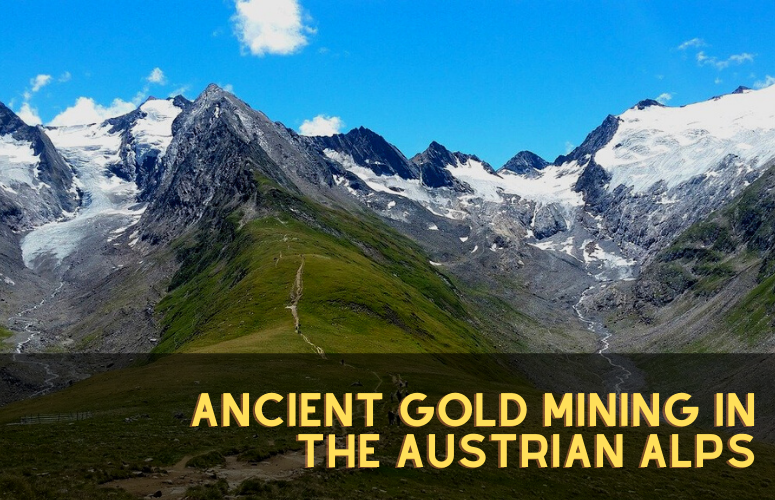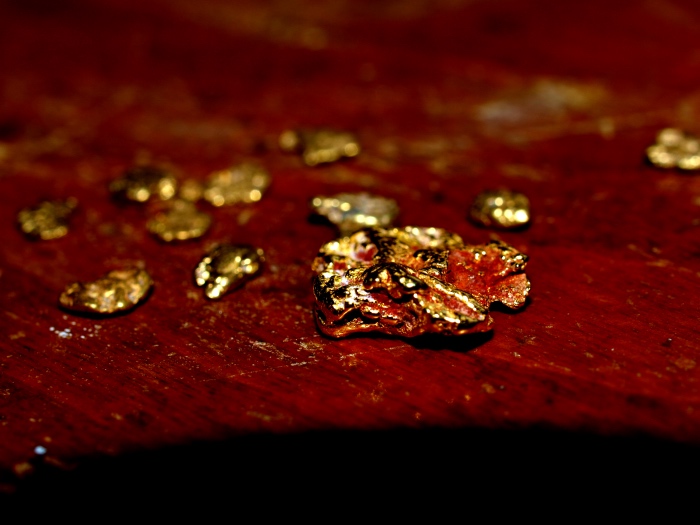
Present-day Austria was the Noricum Kingdom of Celtic people. Noricum remained the center of metallurgy since 500 BC to Middle Ages. The iron and steel from this region were highly prized because of their superior quality. However, in the Middle Ages, gold mining made Austria the biggest mining enterprise in the world.
In this article, we’ll follow the history of gold mining in Austria, from ancient times to modern day.
Gold Mining in Austria the Roman Era
The real exploitation of gold started when Roman armies conquered Noricum and annexed it as a province around the 15th century BC. The Romans and their successors focused on panning the streams for alluvial gold, so gold mining didn’t develop as much as iron extraction.
The Hohe Tauern Mountain Range
According to historical records, Austria’s gold panning may date back to the eighth century AD. But it remained limited to Hohe Tauren mountains of the Eastern Alps. The Salzach River’s sidebands were filled with gold washed down from the glaciers. According to historians, flourishing gold panning in these high-altitude regions sparked the formation of communities that lasted for centuries.
Hundreds of miners and their families came to the Salzburg Mountains in the fourteenth and fifteenth centuries in search of gold. During this golden era, more than 3000 individuals lived there. As a result, earliest mining settlements established in these regions. The area has remained inhabited to the present day.
Excavations in the Austrian Alps have revealed ancient ore extraction sites and 130-kilometer-long subterranean tunnels and shafts. The Rauris Valley and the Gastein Valley are home to a number of historical mining sites. Several gold coins, neck rings, and other ornamental gold items have been found the region. Now the area is protected under the Hohe Tauren National Park.
Rauris Vally
Rauris was the first commercial gold mine in Austria, it is also home to some of the oldest mines in Austria, dating back to the 14th Century AD. Hohe Sonenblick in Rauris valley was the site of the first underground mine which produced gold and silver ore.
Gastein Vally
Austria’s second major gold-mine was in Gastein Valley, located south of Salzburg border. It is thought to be the birthplace of Austria’s first gold rush. The valley also produced high-quality silver along with gold.
Gold Mining in Austria in Renaissance Period
All the gold ore from the Austrian Alps was sold to Venice at the start of commercial mining, which wasn’t very lucrative. However, the scenario changed when the mines were brought directly under control of the archbishop and the church began minting coins for the empire. The church also supported the industry and used it to alleviate poverty, by granting mining permits to poor labourers. In the end, all of this evolved into one of Austria’s most lucrative enterprises and made it one of Europe’s greatest gold producers.

The Early Modern Period was remarkable for the improvement of gold mining technology in Austria. Several new mines were built in the mountains; the “Tauren Window” in the Eastern Alps, for example, revolutionized gold mining. According to records 27,000 ounces of gold were extracted from the mines in 1557, making it the most productive year in the Austrian gold mining history.
In the next fifty years, gold mining in Austria declined steeply. The main causes of the downturn were the exhaustion of all lodes in Tauern range and the failure to find new ones. By the middle of the 17th century, the mining industry in Austria was on its last legs and completely closed down by the end of century.
Mining in 20th Century
After the second world war Karl Imhof, the founder of Radhausberg mining company tried to re-stimulate the industry. Another company ‘Preuß-AG’ also successfully managed to discover new deposits between 1938 to 1945. But the cost of extracting the gold was too high for it to be profitable. So, gold mining was never able to made a comeback. Now Austria produces just a few hundred ounces of gold each year.
Gold Mining in Present Day Austria
The remnants of the golden era are still visible in Austria’s Alps. The pre-historic mining industry has been well preserved and is protected by the Austrian government. In 1974, two hobbyist Rudolf Ertl and Raimund Granögger began gold panning excursions for tourists in Rauris and Gastein Valleys. The sites are now popular tourist attractions in Austria where everyone can try their hand at gold panning.
Currently, many companies are reworking old mining sites to extract deep gold deposits and the prospects are promising. Based on soil sampling and modern prospecting technology, the chances of finding rich deposits in Austria are high and millions of ounces of gold might still be waiting to be discovered.
In the Italian High Country Prospectors are Finding Gold
Where to Find Gold in Germany – Rhine River & Other Locations
